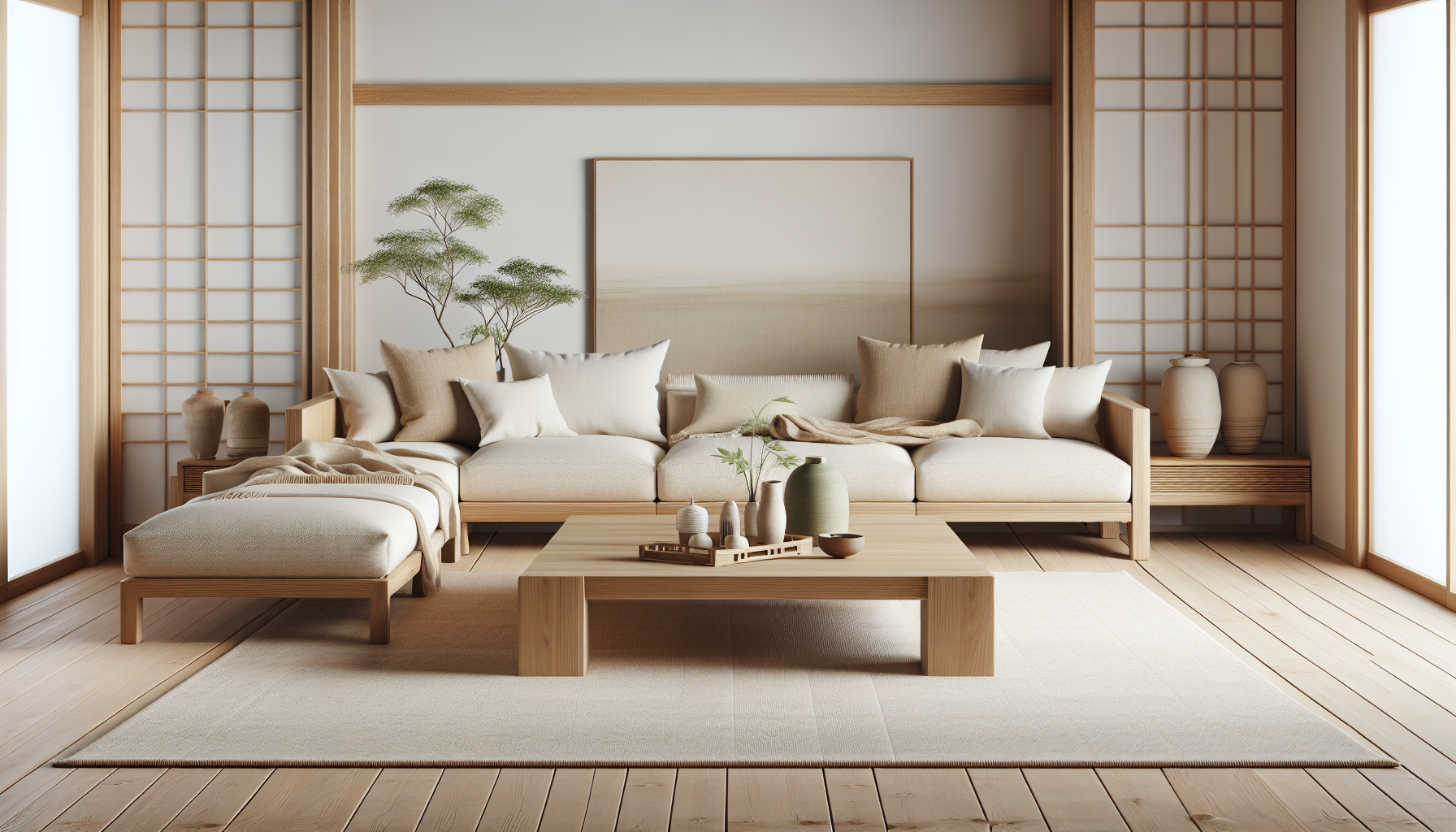Have you ever wondered how to create a harmonious living space that combines functionality and elegance? Japandi design, which merges Japanese minimalism with Scandinavian coziness, presents a unique challenge, especially when considering the often bold and flexible nature of modular furniture. So, can modular furniture work in Japandi interiors? Let’s unpack this idea together.
Understanding Japandi Design
Japandi design is all about simplicity, natural materials, and functionality. At its core, it seeks to create peaceful environments that promote well-being. This style thrives on blending the uncluttered beauty of Japanese aesthetics with the warmth of Scandinavian sensibilities.
Characteristics of Japandi Design
-
Minimalism: You’ll notice a strong emphasis on simplicity. Every piece in your space should serve a purpose while contributing to the overall aesthetic.
-
Natural Materials: Wood, bamboo, ceramics, and stone are often the stars of Japandi interiors. These materials not only look good but also bring a sense of nature indoors.
-
Neutral Color Palette: Soft, muted colors dominate the space. Think earthy tones, soft whites, and gentle grays. This palette can serve as a perfect backdrop for natural materials and textures.
-
Functional Furniture: In Japandi design, every item should be practical. Furniture is chosen based on its utility without compromising aesthetic appeal.
-
Comfort and Coziness: While minimalism is essential, coziness shouldn’t be overlooked. Soft textures, light fabrics, and inviting shapes can help ensure your space feels warm and welcoming.
What is Modular Furniture?
In contrast to the fixed nature of traditional furniture, modular furniture is designed to be flexible and adaptable. This type of furniture consists of individual pieces that can be reconfigured or combined to accommodate different needs and spaces.
Benefits of Modular Furniture
-
Flexibility: The adaptability of modular pieces allows you to reconfigure your space based on your needs or preferences.
-
Space-Saving: Modular furniture is particularly useful in smaller spaces where maximizing functionality is essential.
-
Customization: You can often choose different colors, materials, and configurations, so it perfectly fits your style and requirements.
-
Easy to Move: Modular pieces are usually lighter and easier to handle, making it simpler to change your interior layout when you want a fresh look.
-
Cost-Effective: Many times, modular furniture can offer a more affordable alternative to custom-built pieces while still delivering a personalized touch.
The Compatibility of Modular Furniture with Japandi Interiors
Now that you’re familiar with both Japandi design and modular furniture, let’s really focus on how the two can coexist, creating a harmonious living environment.
Balancing Minimalism with Modularity
To make modular furniture work within a Japandi design, it’s essential to keep the minimalist aspects in check. This means selecting modular pieces that are streamlined and devoid of excessive ornamentation. Look for designs that feature clean lines, subtle colors, and natural materials.
Ideal Modular Styles for Japandi Spaces
| Style | Description |
|---|---|
| Scandinavian-inspired | Simple shapes with natural wood finishes. Ideal for blending warmth and minimalism. |
| Low-profile sofas | Low seating options provide a sense of grounded coziness while maintaining sleek lines. |
| Modular shelving units | Functional yet aesthetically pleasing, perfect for displaying curated items. |
Focusing on Natural Materials
For modular furniture to blend seamlessly into Japandi interiors, it should boast the same organic qualities as classic Japandi pieces. Look for items made from solid wood, bamboo, or other sustainable materials.
Material Options for Modular Furniture
| Material | Characteristics |
|---|---|
| Solid Wood | Durable and timeless, enhances natural beauty. |
| Bamboo | Lightweight, eco-friendly, adds a modern feel. |
| Linen or Cotton Fabrics | Textiles that bring coziness and warmth, elevate comfort. |
Neutral Color Palettes
A crucial aspect of Japandi design is the color palette. To find modular furniture that fits, focus on options that incorporate soft hues, muted colors, and earthy tones. This ensures your modular pieces blend in rather than stand out in a jarring manner.
Color Choices for Modular Furniture
| Color Tone | Description |
|---|---|
| Earthy Neutrals | Soft browns and greens that reflect the natural world. |
| Subtle Grays | Provide an elegant touch without overwhelming the space. |
| Soft Whites | Create an airy feeling, making the space feel larger. |
Essential Furniture Pieces
Certain modular furniture pieces can greatly enhance your Japandi interior, provided they align with the principles of simplicity and functionality.
Key Modular Furniture to Consider
| Furniture Type | Why It Works |
|---|---|
| Modular Sectionals | Can be rearranged to fit different space requirements and is comfortable for gatherings. |
| Convertible Coffee Tables | Versatile surfaces that adjust between coffee table and dining levels, promoting functionality. |
| Modular Ottomans | Added seating or a footrest that can be used throughout the space. |
Integrating Modular Pieces into Your Space
Once you decide on the types of modular furniture that align with Japandi design principles, the real fun begins—actually integrating these pieces into your home!
Layout Considerations
An essential factor when fitting modular furniture into a Japandi interior is how you arrange the pieces. Maintain a balance between open space and functionality, ensuring each section of your room serves its purpose.
-
Create Zones: Use modular furniture to delineate different areas within a room. For example, a sectional sofa can define the living area while a modular shelving unit could separate a workspace.
-
Maintain Flow: Keep pathways clear and ensure each piece contributes to an open, airy feel, which is crucial in Japandi style.
-
Think Vertical: Use taller modular units to draw the eye upwards, creating the illusion of greater space while enhancing functionality.
Personal Touches with Modular Furniture
While functionality should always come first, adding personal flair can enhance the entire aesthetic. Here are a few ideas:
-
Layer Textures: Integrate soft textiles like throws or pillows in natural fibers to soften the sleekness of modular pieces.
-
Curate Decor: Use the modular shelving units to showcase curated decor that reflects your personality—think ceramics or art pieces that resonate with the natural elements emphasized in Japandi design.
-
Incorporate Plants: Living plants can add life to your space. Place pots on modular furniture or choose modular pieces that double as plant stands.
Overcoming Challenges in Integration
While modular furniture can harmonize with Japandi design, a few challenges might arise. Let’s troubleshoot some common concerns.
1. Too Much Clutter
One of the main drawbacks of modular furniture is that it can contribute to visual clutter if not carefully considered.
- Solution: Aim for pieces that have clean lines and focus on only a few essential items that can express your style without overwhelming your space.
2. Mixing Styles
Not all modular furniture suits the subtlety of Japandi design. You might come across pieces that are too eclectic or bold.
- Solution: Stick to modular options that embody simplicity. Choose designs that align with Japandi aesthetics to avoid clashing.
3. Over-Attaching to Trends
Trendy modular furniture might not stand the test of time.
- Solution: Seek out timeless designs that can adapt as your style evolves. Try to balance trend with the ethos of Japandi that champions longevity and nature.
Conclusion
So, can modular furniture blend seamlessly into Japandi interiors? The answer is a resounding yes! With thoughtful selection and integration, modular pieces can elevate your space without compromising the essential qualities that define the Japandi style.
As you embark on the journey to merge modular furniture within a Japandi environment, remember to prioritize minimalism, natural materials, and a neutral palette. By focusing on these elements, you can create a stunningly functional and serene living space that reflects your unique taste—a perfect harmony of flexibility and tranquility.

